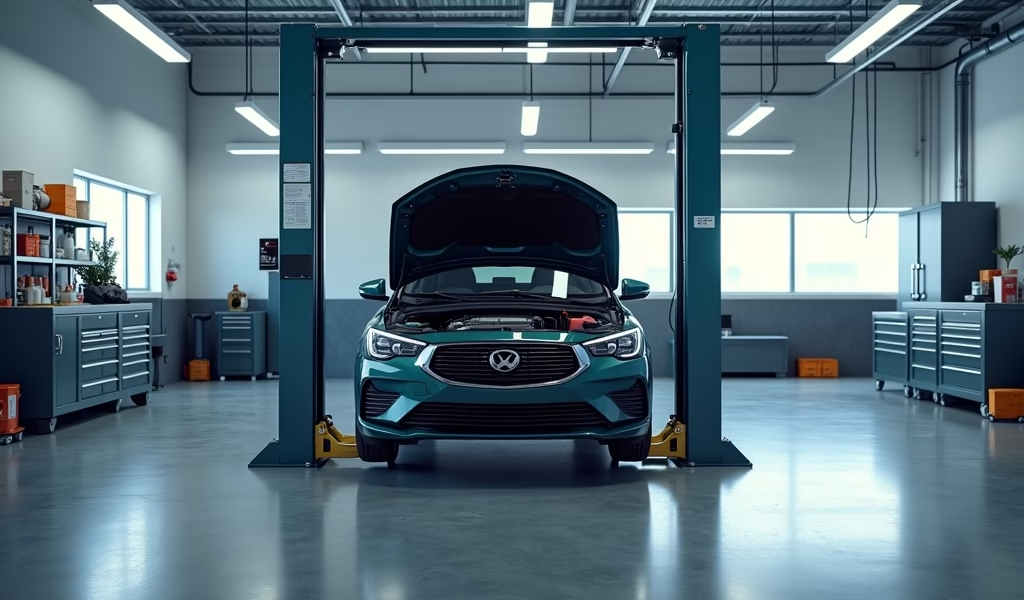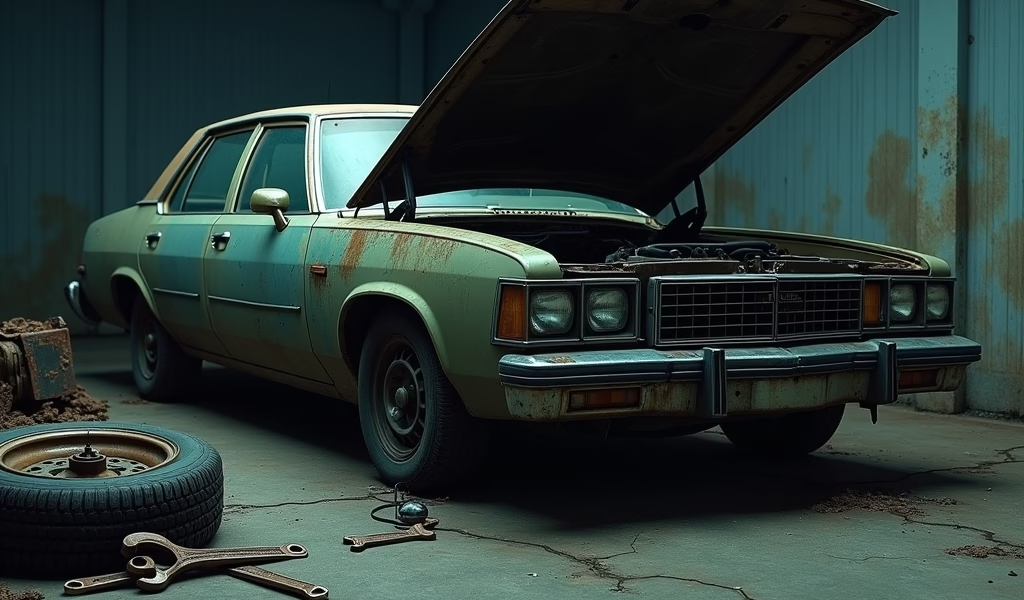Overview
This article provides seven essential maintenance strategies for extending the life of used cars, including regular oil changes, tire care, battery maintenance, brake system checks, fluid monitoring, air filter replacement, and preventative maintenance. The author emphasizes that consistent, modest investments in proper maintenance will save money on costly repairs while ensuring safety and preserving the vehicle’s value over time.
Table of Contents
- Introduction: Keeping Your Used Car Running Smoothly
- 1. Regular Oil Changes: The Lifeblood of Your Engine
- 2. Tire Maintenance: Where the Rubber Meets the Road
- 3. Battery Care: Power Preservation Tactics
- 4. Brake System: Safety First Approach
- 5. Fluids Check: Keeping Everything Flowing
- 6. Air Filters: Let Your Car Breathe Easy
- 7. Preventative Maintenance: Avoiding Costly Repairs
- Conclusion: Maximizing Your Used Car Investment
- Frequently Asked Questions
Introduction: Keeping Your Used Car Running Smoothly
Finding the best used car is only half the battle. Maintaining it properly is what transforms a good purchase into a great long-term investment. As someone who’s spent decades under the hood, I can tell you that proper maintenance isn’t just about avoiding breakdowns—it’s about preserving value, ensuring safety, and saving money over time.
When you buy a used vehicle, you’re inheriting both its potential and its history. Whether you’ve purchased a cream puff with meticulous service records or something that needs a bit more TLC, these seven proven maintenance tips will help extend your car’s life significantly. The beauty of these strategies is their simplicity—most don’t require advanced mechanical knowledge, just consistent attention.
Let’s roll up our sleeves and explore how you can keep your used vehicle running like new for years to come. These aren’t just suggestions—they’re essential practices that I’ve seen make the difference between cars that last 100,000 miles and those that cruise well beyond 200,000.
1. Regular Oil Changes: The Lifeblood of Your Engine
If engines could talk, they’d beg you for fresh oil. Oil changes might seem basic, but they’re absolutely fundamental to your used car’s longevity. Engine oil doesn’t just lubricate—it cleans, cools, and protects the heart of your vehicle.
For most used vehicles, changing your oil every 3,000-5,000 miles remains the gold standard, though some newer models with synthetic oil can go longer. Check your owner’s manual for the manufacturer’s recommendation, but remember: used cars often benefit from more frequent changes, not less. This is especially true if the vehicle has higher mileage or unknown maintenance history.
When changing oil, always replace the filter too. Think of it like getting a new kidney with your blood transfusion—it just makes sense. The few extra dollars spent on a quality filter can prevent contaminants from circulating through your engine.
A pro tip from my garage: Keep a small notebook in your glove compartment to log every oil change with the date, mileage, and type of oil used. This creates a valuable service history that can actually increase your car’s resale value and help identify potential issues before they become problems.
2. Tire Maintenance: Where the Rubber Meets the Road
Your tires are the only parts of your car that actually touch the road, making them critically important for both safety and efficiency. Proper tire maintenance begins with regular pressure checks—at least monthly and before any long trips. Underinflated tires waste fuel and wear unevenly, while overinflated tires provide less traction and a harsher ride.

Rotation is your next priority. Every 5,000-7,000 miles, have your tires rotated to ensure even wear patterns. Many shops will do this for free if you’re getting other service done, so always ask. While they’re off, have the technician check for abnormal wear patterns that might indicate alignment issues.
Speaking of alignment, it’s worth checking annually or whenever you notice your vehicle pulling to one side. Proper alignment not only extends tire life but improves fuel economy and handling. According to NHTSA research, properly maintained tires can improve fuel efficiency by up to 3.3%—savings that add up quickly.
Don’t forget to regularly inspect your tires for damage or excessive wear. The penny test works well—insert a penny into the tread with Lincoln’s head upside down. If you can see the top of his head, it’s time for new tires. When replacing tires on a best used car purchase, resist the temptation to buy the cheapest option. Mid-range tires often provide the best value in terms of performance, safety, and longevity.
3. Battery Care: Power Preservation Tactics
Battery issues rank among the top reasons for roadside assistance calls, yet they’re surprisingly preventable with basic maintenance. Start by keeping your battery terminals clean—corrosion can prevent proper charging and eventually lead to starting problems. A mixture of baking soda and water applied with an old toothbrush works wonders for cleaning terminals, followed by a light coating of petroleum jelly to prevent future corrosion.
Most modern batteries are “maintenance-free,” but that doesn’t mean “ignore-me-free.” Have your battery tested annually after it reaches three years of age. Many auto parts stores offer free testing that measures both voltage and cold cranking amps—the true indicator of battery health.
If you drive infrequently or primarily take short trips, your battery may not fully charge through normal driving. Consider using a trickle charger or battery maintainer during periods of inactivity. These devices cost far less than a new battery and can extend your existing battery’s life significantly.
When it is time for replacement, don’t skimp on quality. Choose a battery that matches or exceeds your vehicle’s specifications, particularly if you live in extreme climates. Batteries rated for higher cold cranking amps offer better performance in winter, while those with reserve capacity provide extra security during electrical system issues.
4. Brake System: Safety First Approach
Your brake system literally stands between you and potential disaster, making it perhaps the most critical maintenance area in your vehicle. Never ignore warning signs like squealing, grinding, pulsation during braking, or a soft pedal—these are your car’s way of waving red flags.
For used cars, I recommend a thorough brake inspection every 10,000 miles or annually, whichever comes first. This should include checking pad thickness, rotor condition, brake fluid level and quality, and the overall hydraulic system for leaks or weaknesses. Brake fluid is hygroscopic, meaning it absorbs moisture from the air over time, which can lead to corrosion inside your brake lines and reduced stopping power.
Most drivers focus exclusively on brake pads, but the entire system requires attention. Brake fluid should be flushed and replaced every 2-3 years, regardless of mileage. Fresh fluid maintains proper viscosity and prevents internal corrosion of components. According to Consumer Reports, neglected brake fluid is a common contributor to premature brake system failure.
When replacing brake components, consider upgrading from the bargain options. Mid-grade or premium brake pads often provide significantly better performance and longevity for just a modest price increase. Remember that brakes don’t just stop your car—they make it safe to drive at all.
5. Fluids Check: Keeping Everything Flowing

Your used car depends on multiple fluid systems that function like the circulatory system in your body. Beyond engine oil, there’s transmission fluid, coolant, power steering fluid, brake fluid, and even windshield washer fluid—all playing essential roles in keeping your vehicle running smoothly.
Create a monthly habit of checking all accessible fluids. Most can be inspected via dipsticks or see-through reservoirs, making this a quick 5-minute task. Pay special attention to the color and smell of each fluid—darkening, cloudiness, or burnt smells typically indicate degradation and the need for replacement.
Transmission fluid deserves particular attention in used vehicles. In automatic transmissions, this fluid serves as both lubricant and hydraulic medium. Unlike engine oil, transmission fluid often doesn’t have a scheduled replacement interval in many maintenance schedules, leading many owners to mistakenly believe it lasts forever.
For reliable used cars with over 60,000 miles, consider a transmission fluid exchange if there’s no record of it being done. This relatively inexpensive service can dramatically extend transmission life—and when you consider that transmission replacement often costs thousands, preventative maintenance becomes a bargain.
Coolant requires similar vigilance. Beyond checking levels, note its color and clarity. Most modern coolants last 5 years or 100,000 miles, but many used cars still have old fluid circulating through their cooling systems. A complete flush and replacement with the manufacturer-recommended coolant type provides fresh corrosion inhibitors that protect your radiator, heater core, and engine water jackets.
6. Air Filters: Let Your Car Breathe Easy
Just as you wouldn’t exercise with a cloth over your face, your car’s engine shouldn’t have to breathe through a clogged air filter. This simple component plays an outsized role in both performance and efficiency. A dirty air filter can reduce fuel economy by up to 10% and decrease acceleration significantly.
The beauty of air filter maintenance is its simplicity. Most filters can be checked in under a minute—just locate the air box (usually a black plastic container near the front of the engine), open the clips or remove a few screws, and inspect the filter element. Hold it up to a light source; if you can’t see light passing through, it’s time for replacement.
Don’t forget about the cabin air filter—the unsung hero of vehicle comfort. This filter cleans the air you breathe inside the car, removing pollen, dust, and other contaminants. Most should be replaced annually or every 15,000 miles, but check your owner’s manual for specifics. Replacement typically takes just minutes and can dramatically improve interior air quality.
When selecting replacement filters, consider upgrading to high-performance versions. While slightly more expensive, premium air filters often flow better than standard paper elements, potentially improving both power and efficiency. Some are even washable and reusable, making them economical over the long term despite higher initial costs.
7. Preventative Maintenance: Avoiding Costly Repairs
The most experienced mechanics share a common philosophy: spending modest amounts on preventative maintenance saves fortunes on emergency repairs. This approach is particularly valuable with used cars, where components have already experienced wear.
Timing belt replacement exemplifies this principle perfectly. Though costly ($500-$1,000 at most shops), replacing this critical component according to the manufacturer’s interval prevents potential engine destruction that could cost $2,000-$4,000 or more. If you’ve purchased a used car with unknown history, check whether it has a timing belt (many newer cars use timing chains instead) and when it was last replaced.
Similarly, cooling system maintenance prevents overheating scenarios that commonly lead to warped heads or blown head gaskets. Inspect hoses and belts for cracks, flexibility, and tension. Replace any that show signs of aging before they fail catastrophically.
Develop a relationship with a trustworthy mechanic who specializes in your vehicle’s make. Independent shops often offer better value than dealerships for out-of-warranty vehicles, and a mechanic who knows your car’s history can provide invaluable preventative advice.
Consider scheduling a comprehensive inspection annually, even if you’re not experiencing problems. This “physical exam” for your car can identify developing issues before they leave you stranded. Many shops offer multi-point inspections for reasonable rates, and the peace of mind alone justifies the expense.
Conclusion: Maximizing Your Used Car Investment
Maintaining a used car properly transforms it from a simple transportation tool into a reliable, long-term asset. By following these seven proven tips—regular oil changes, tire care, battery maintenance, brake system checks, fluid monitoring, air filter replacement, and preventative maintenance—you’re not just avoiding breakdowns; you’re actively extending your vehicle’s useful life.
Remember that consistent, modest investments in maintenance nearly always cost less than major repairs or premature vehicle replacement. The best used car is ultimately the one that’s been cared for properly—whether that started with the previous owner or begins with you.
Keep a maintenance log, stay ahead of recommended service intervals, and never ignore unusual noises, smells, or performance changes. Your attention to these details will reward you with thousands of trouble-free miles and significantly better resale value when it’s eventually time to move on to your next vehicle.
Proper maintenance isn’t just about mechanical care—it’s about respecting your investment and ensuring safety for you and your passengers. Treat your used car right, and it will return the favor with years of reliable service.
Frequently Asked Questions
What’s the single most important maintenance task for a used car?
Regular oil changes are the most critical maintenance task for any used car. Fresh oil provides essential lubrication, cooling, and cleaning functions that directly impact engine longevity.
How often should I rotate my tires on a used car?
Rotate your tires every 5,000-7,000 miles to ensure even wear and maximum tire life. Many shops offer free rotation when you get your oil changed, making it convenient to maintain this schedule.
Is synthetic oil worth the extra cost for an older used car?
Yes, synthetic oil is often worth the investment even in older vehicles as it provides better protection, especially during cold starts, and typically allows for longer intervals between changes. The additional cost is offset by improved engine protection and potentially reduced wear.
How can I tell if my used car needs new brakes?
Listen for squealing or grinding noises, feel for pulsation in the brake pedal, or notice if the car pulls to one side during braking. These symptoms, along with a soft brake pedal or increased stopping distance, indicate it’s time for a brake inspection.
What’s the average lifespan of a properly maintained used car?
With proper maintenance, many modern vehicles can exceed 200,000 miles of reliable service. The key factors are consistent maintenance, addressing small issues before they become major problems, and following the manufacturer’s service recommendations.


Pingback: Cheapest Chevy Car: 7 Proven Care Tips - knowsyourcar.com
Pingback: Best Cheap Cars: 7 Proven DIY Care Tips - knowsyourcar.com